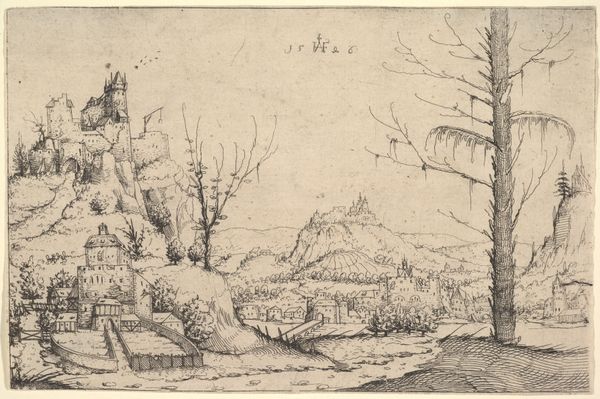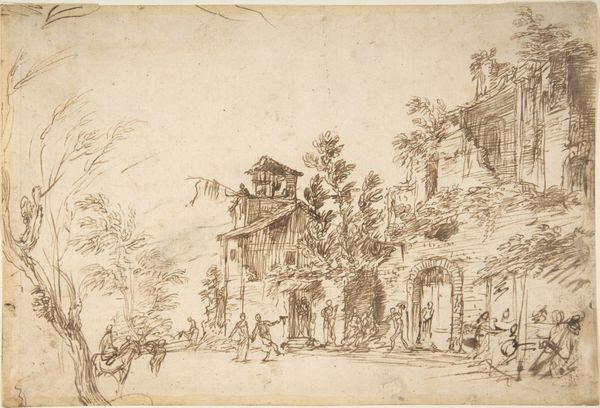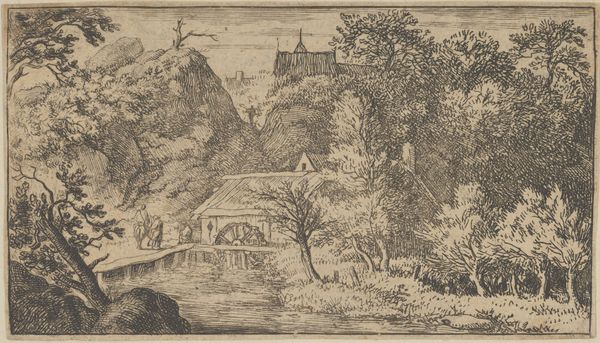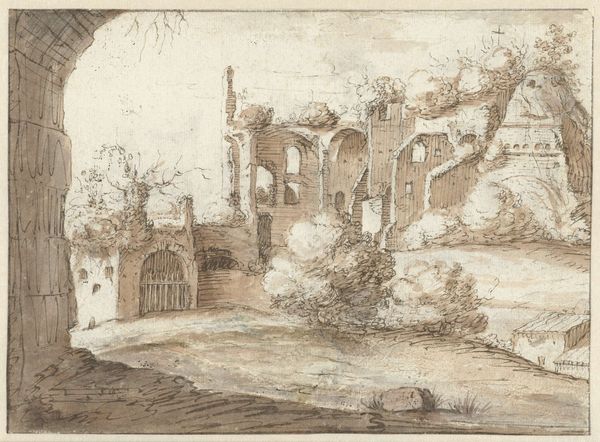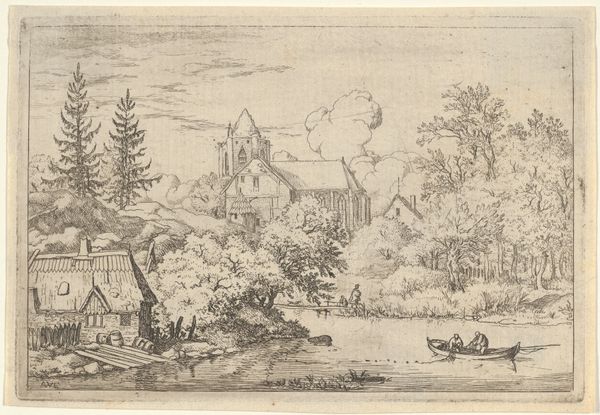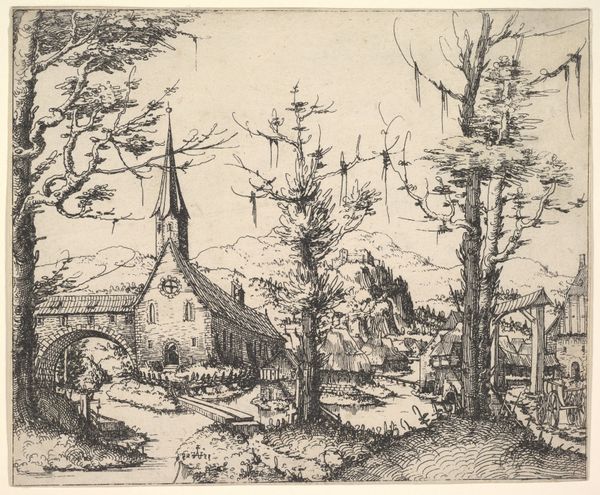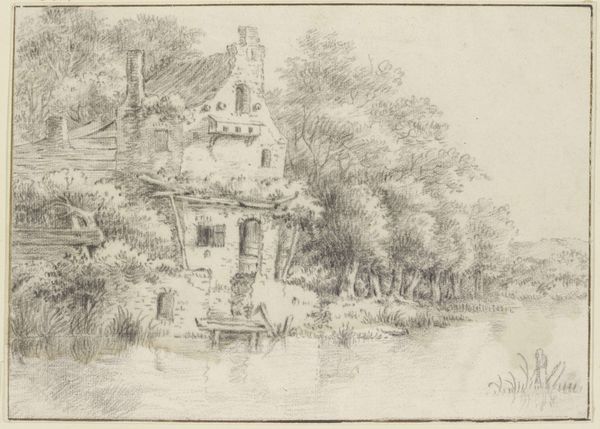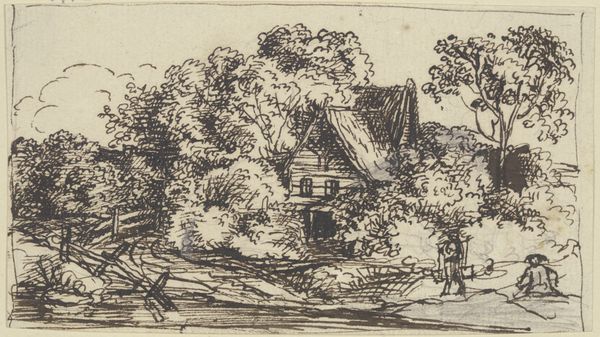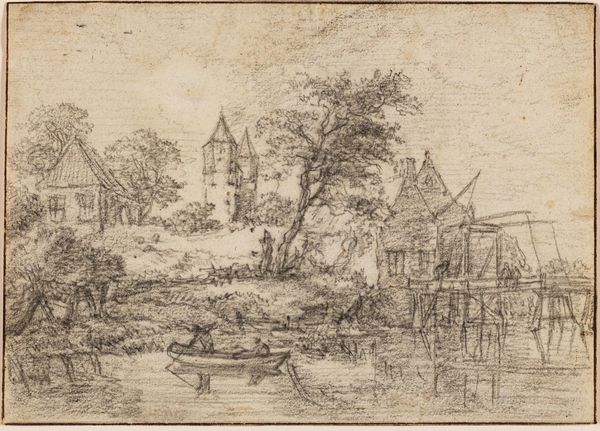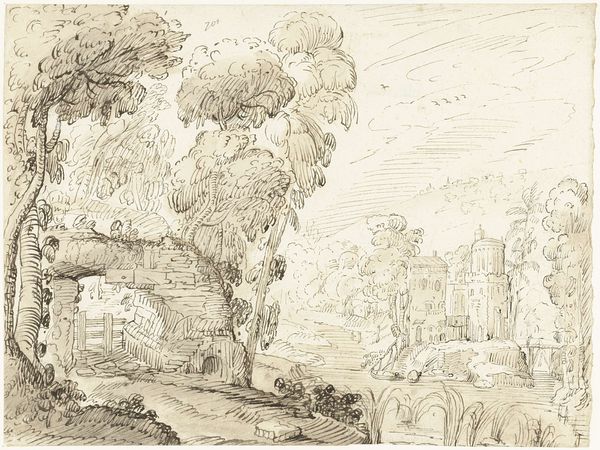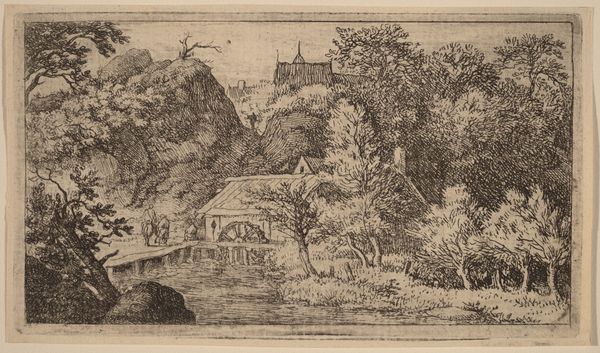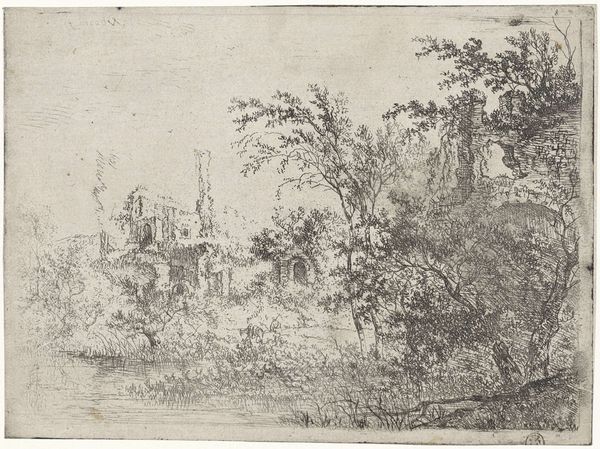
drawing, print, ink
#
drawing
#
narrative-art
# print
#
pen sketch
#
landscape
#
mannerism
#
figuration
#
ink
#
line
#
history-painting
#
realism
Copyright: National Gallery of Art: CC0 1.0
Curator: This pen and ink drawing, executed around 1545, is titled “River Landscape with the Temptation of Christ” and is the work of Augustin Hirschvogel. Editor: It's an oddly peaceful temptation scene, isn't it? Like, "Hey, Jesus, wanna see all this? It *could* be yours." The lines are so delicate, the city feels more imagined than imposing. Curator: Hirschvogel was a fascinating figure, a trained mathematician and cartographer as well as an artist. He often combined precise observation with a kind of fantastical, almost Mannerist style. He produced designs for stained glass, etchings, and is primarily known for his landscape work. Editor: I see what you mean. It’s precise, almost architectural, and yet… look at the looseness of that big tree on the left, and the almost scribbled-in foliage. It’s like two different realities bumping into each other, the real and the dreamt-of, maybe echoing Christ’s own inner struggle with the earthly versus the divine? Curator: Well, it’s interesting that you pick up on that sense of tension. During the Reformation, the power of religious imagery was definitely being debated. Hirschvogel, like many artists of his time, was working in a world where the purpose and interpretation of religious art were constantly being questioned. Was it to instruct? To inspire? To simply depict? Editor: It definitely makes you wonder how viewers reacted. Like, did they focus on the recognizable biblical scene, or the strangely inviting, almost stage-like landscape it’s set within? It makes me think about the role landscape itself played during this historical context. It suggests possibility, expansion. Is Hirschvogel playing with those possibilities by embedding the temptation within a landscape? Curator: That's a great point. The open landscape could suggest the expanding world, the possibilities—or perhaps the temptations—that lay before people. The rising merchant class and greater trade opportunities had an impact in the early to mid-16th century. The ruins on the left, what does it represent, and why were they placed there to suggest to viewers? I feel that landscape became an interesting way to insert symbolism into biblical scenes without explicitly illustrating, say, doctrinal debates. Editor: It definitely brings something to this tiny scene that, ultimately, maybe we can all relate to, divine or not, especially when presented so delicately. That push and pull of potential, represented within us all. Curator: Indeed, and so, perhaps the temptation lies not just with Christ, but within the viewer, and within all of human progress too.
Comments
No comments
Be the first to comment and join the conversation on the ultimate creative platform.
